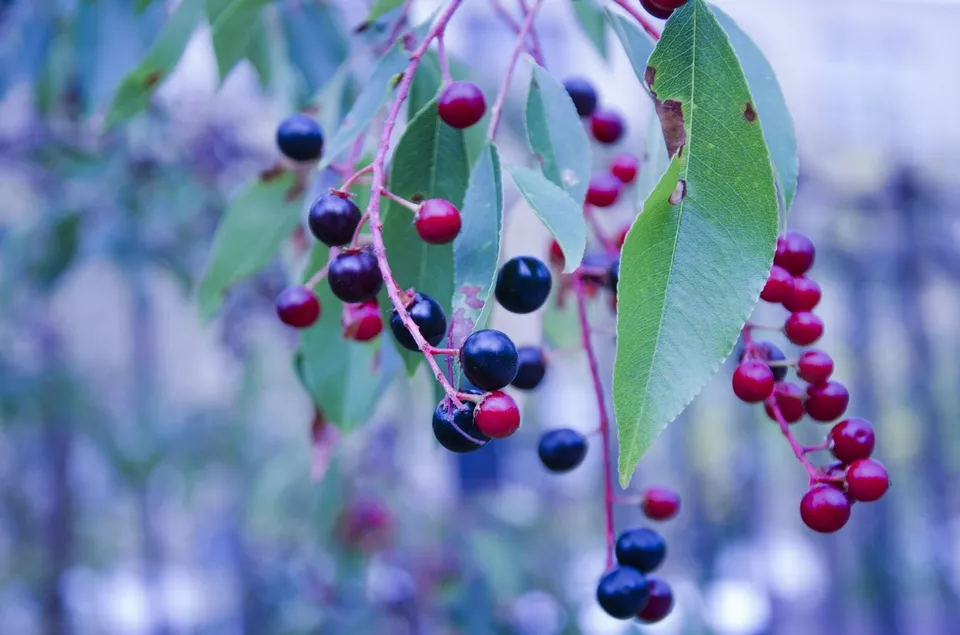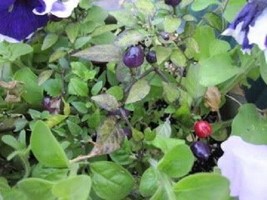LWS Black Gold Huckleberry Vaccinium and 50 similar items
LWS Black Gold Huckleberry Vaccinium Membranaceum 30 Seeds USPS Shipping
$9.10
View full item details »
Shipping options
Estimated to arrive by Thu, Aug 28th.
Details
$3.28 via USPS Ground Advantage (1 to 10 business days) to United States
Ships from
Indonesia

Offer policy
OBO - Seller accepts offers on this item.
Details
Return policy
Full refund available within 30 days
Purchase protection
Payment options
PayPal accepted
PayPal Credit accepted
Venmo accepted
PayPal, MasterCard, Visa, Discover, and American Express accepted
Maestro accepted
Amazon Pay accepted
Nuvei accepted
View full item details »
Shipping options
Estimated to arrive by Thu, Aug 28th.
Details
$3.28 via USPS Ground Advantage (1 to 10 business days) to United States
Ships from
Indonesia

Offer policy
OBO - Seller accepts offers on this item.
Details
Return policy
Full refund available within 30 days
Purchase protection
Payment options
PayPal accepted
PayPal Credit accepted
Venmo accepted
PayPal, MasterCard, Visa, Discover, and American Express accepted
Maestro accepted
Amazon Pay accepted
Nuvei accepted
Item traits
| Category: | |
|---|---|
| Quantity Available: |
50 in stock |
| Condition: |
New |
| UPC: |
369387090388 |
| Sunlight: |
Partial Shade |
| Season of Interest: |
Summer |
| Watering: |
Medium |
| Brand: |
Unbranded |
| MPN: |
HUAJIKUN2856 |
Listing details
| Seller policies: | |
|---|---|
| Shipping discount: |
No combined shipping offered |
| Posted for sale: |
More than a week ago |
| Item number: |
1663516768 |
Item description
LWS Black Gold Huckleberry Vaccinium Membranaceum 30 Seeds USPS Shipping
Phenology: Bloom time: Late spring to June. Fruit ripens: Mid-summer to late August.
This species is prized for its delicious berries. Its leaves turn a spectacular red to
purple in the fall. Mountain Huckleberry does best when it has little competition from
other plants and is ideal for a rock garden or on a slope with plenty of organic matter.
Plant it together with its natural companion, Beargrass, to reproduce the look of a
subalpine hillside. Soil moisture will affect the quality and quantity of berry
production, although it still will fruit even after 4-6 months with no rain.
Propagation: In nature, Black Huckleberry propagates mostly vegetatively by slow
expansion via adventitious buds on its rhizomes. Although seed reproduction is
reportedly rare in nature, seeds can be propagated with about a 42% germination rate.
It is best to plant seeds as soon as they are ripe in a cold frame. Stored seed may
require a 3 month stratification period. Cuttings are difficult but possible from
half-ripe wood taken in August, with a heel. More success is likely with division of
the rhizomes.
Use by People: The flavorful, juicy berries were collected by natives, eaten fresh or
cooked, mashed and dried into cakes. Today, many families make special trips to the
mountains to pick huckleberries. They go back to the same patch every year, unofficially
claiming it as their own? hesitant to share the location with others. This is the species of
huckleberry most commonly used in huckleberry Jams, syrups and other products marketed to tourists.
Use by Wildlife: Huckleberry flowers are pollinated by bees. Black Huckleberry is the dominant
species of huckleberry consumed by Grizzly Bears and Black Bears; they eat the berries,
leaves, stems and roots. Elk, moose and deer will also browse on the foliage.
Small mammals, grouse and other birds also eat the berries as well as use the shrub as cover.
Wild vacciniums are notoriously challenging to grow, but many of us can't help but try anyway!
They are slow-growing and need careful attention during establishment. They thrive in acidic,
well drained soils, and taste and produce best in 60-70% sunshine. The roots of the huckleberry
are sensitive to compaction. Plant them away from pathways, and keep soil mulched.
Summer watering will produce bigger berries. Harvest the berries in late summer-fall when they
have fully ripened. They will be fully purple-black and firm, but with a little give. Due to
lower yields than cultivated berries, expect to need 3 to 4 times the bushes for the same harvest.
If you have a large bird population, plants can be covered with netting to keep the birds from
eating all the berries. The berries are superior to cultivated blueberries in taste, although
they are slightly smaller and less productive. Use them in any way you might use a blueberry -
fresh, frozen, dried, in jams, cobblers, crisps, leathers, and more.
Buy Seeds Online,Organic Seeds,Heirloom Seeds,Non-GMO Seeds,Vegetable Seeds,Flower Seeds,Herb Seeds,Fruit Seeds,Garden Seeds,Seed Starter Kits
,Rare Seeds,Bulk Seeds,Indoor Gardening Seeds,Seed Catalog,Seed Packs for Sale,Sustainable Seeds,Greenhouse Seeds,Seed Suppliers,Planting Seeds
,Home Garden Seeds
|
Why are we showing these items?
Booth
LUWAKSEEDS's booth |
|

-
Refine your browsing experience
We can show you more items that are exactly like the original item, or we can show you items that are similar in spirit. By default we show you a mix.
This item has been added to your cart
 LWS Black Gold Huckleberry Vaccinium Membranaceum 30 Seeds USPS Shipping added to cart.
50 available in stock
LWS Black Gold Huckleberry Vaccinium Membranaceum 30 Seeds USPS Shipping added to cart.
50 available in stock
View Cart or continue shopping.
 Please wait while we finish adding this item to your cart.
Please wait while we finish adding this item to your cart.
Get an item reminder
We'll email you a link to your item now and follow up with a single reminder (if you'd like one). That's it! No spam, no hassle.
Already have an account?
Log in and add this item to your wish list.























































